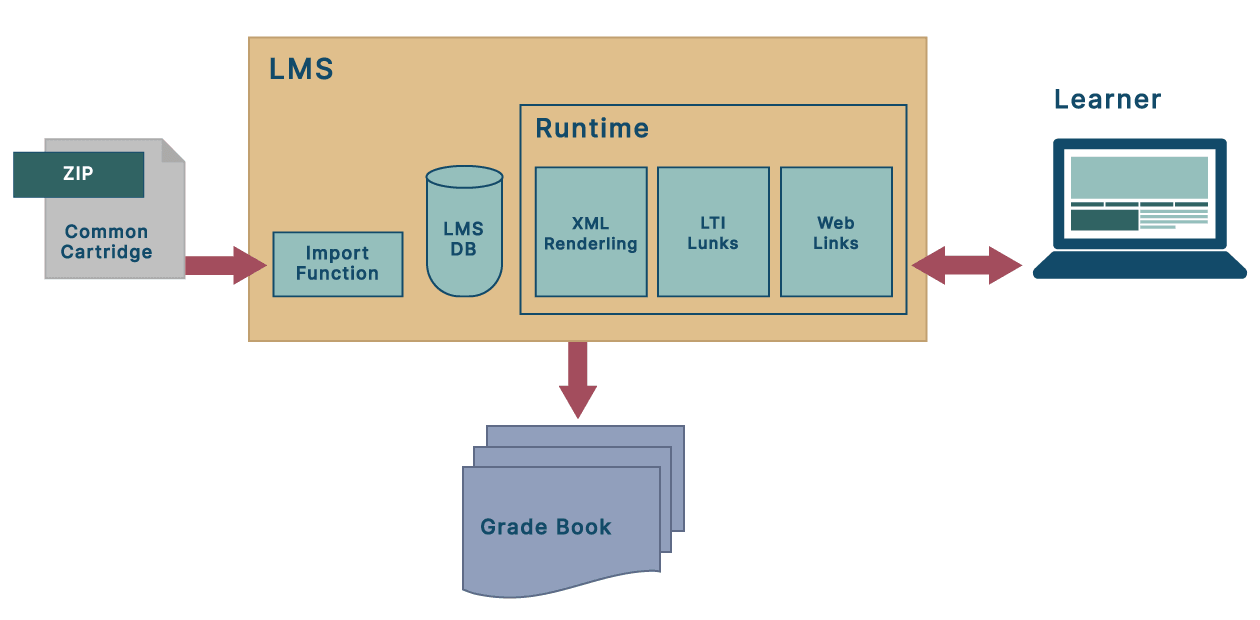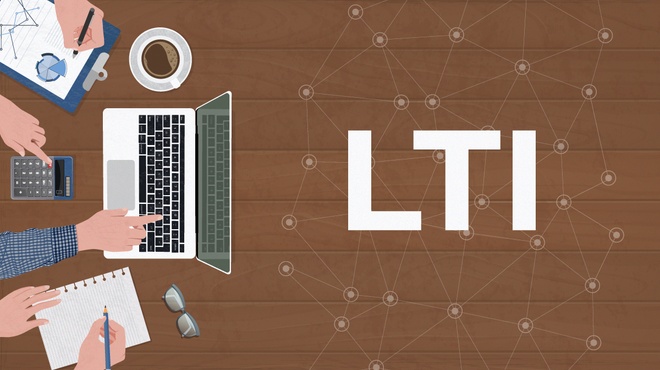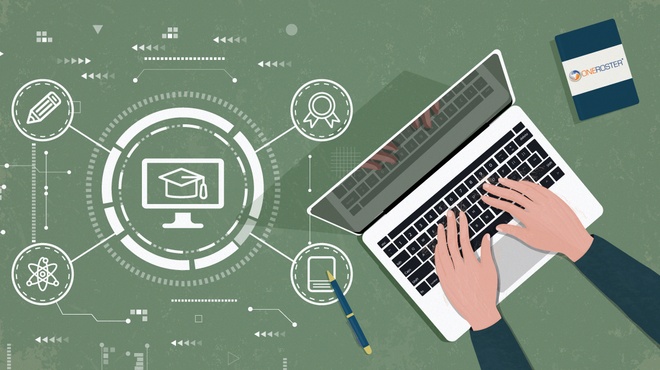Discover LMS eLearning Standards

In this article, we will describe the most widespread standards, explain why they are such a big thing, and give advice on whether you need to conform to one (or several) in your project.
All the fancy features of Learning Management Systems (LMS) are useless without quality educational content at the core. Fortunately, the eLearning industry has been doing a good job making sure that lessons can be reused in different systems without having to undergo a lot of rework. And we have LMS software development standards to thank for that.
Why Were Standards Created?
The first and main reason is interoperability.
Suppose your company has created a great training course for the sales reps. It covers all the important stuff: how to study the market, how to address the questions of a potential customer, how to arrange a great meeting, and deliver a solid presentation. You upload the course to your LMS and everything is fine.
Ten years pass. The course is still relevant, as people are still selling to people and your techniques work. But the LMS is now outdated, you want a new and better system with all the cool new features. So you find a great new system (or develop a custom educational software), purchase it, and now it’s time to upload your learning materials.
If the educational material is compatible with one of the standards, moving information is as easy as attaching a file to an email. Otherwise, you might have to pay extra to convert your courses into a fitting format.
The second reason is the extra features. Newer eLearning standards like xAPI offer much more in terms of gathering business data and studying user behavior. You can monitor the learners’ activities on third-party websites (e.g. when watching educational videos on YouTube), mobile devices, or serious games.
All-in-all, the content standards are a useful tool that makes eLearning easier and more efficient.
What eLearning Standards Are There?
The standards have been around since 1993, but only a few are relevant now.
SCORM
The Sharable Content Object Reference Model (SCORM) is the most popular eLearning materials standard.

eLearning Content Standards Usage, source
It is currently used in several versions (mostly SCORM 1.2 and various kinds of SCORM 2004) with the latter being more stable and having more features. For example, the 2004 specification allows restricted access to some lessons and course sequencing.
Note that SCORM 2004 has four “editions” that differ slightly. You can see the distinguishing features here.
In most cases, this standard covers all your interoperability needs. This is why it is still relevant even when there are more advanced options available.
xAPI
Also known as “Experience API” or “Tin Can API”, it is the latest and the most advanced eLearning protocol. It boasts a ton of features that weren’t available before, for example:
- Mobile learning support;
- Serious games support;
- Cross-domain capabilities (track the learners’ actions on other sites);
- No need for an LMS;
- No need for a browser.
xAPI has been widely adopted by both commercial and governmental organizations (e.g. the US Department of Defense).
For example, the R.E.A.P.E.R. program uses this standard to help American soldiers shoot better. It monitors the accuracy of each individual shooter and sends them personalized reports to show how to improve. Moreover, it also monitors the statistics of each shooting range and gives suggestions to increase efficiency. Such a connection with a real-world training program is also used to teach first aid skills, train salespeople, and more.
A system that is compatible with xAPI can also play SCORM-packaged content — it takes just a few minutes to adapt the lessons.
cmi5
xAPI is a very powerful and very flexible tool that often makes it seem like an overkill for simpler environments. That’s why they’ve created cmi5 — a ruleset that adapts Experience API for use with an LMS. It is both relatively simple and provides many data-related options.
“Since the xAPI specification is highly generalized to support many different use cases, a set of “extra rules” (called a “profile”) is needed to ensure interoperability for a given use case. The cmi5 profile ensures plug and play interoperability between learning content and LMS systems. The use case that the cmi5 profile is specifically designed for is one where the learner launches the learning content/activity from the LMS user interface,” — the developers of the standard said.
1EdTech Stack
1EdTech is a non-profit consortium of academic institutions and commercial companies that strives to improve interoperability between eLearning systems. They have released a number of standards that would be better described as a group.
Firstly, there is the QTI (Question and Test Interoperability). It allows creating quizzes in one system and using them in one or several other systems. However, this content would require a re-upload if any changes are made.
That’s why there is also LTI. This TLA (three-letter acronym) stands for “Learning Tools Interoperability”. It is not quite a content standard — LTI enables a system to connect to a third-party learning tool (an LMS, a custom course, a serious game, etc.). This standard is popular with academia, especially with colleges and universities.
It allows streaming content from a third-party system in real-time, showing all the changes without re-uploading. In addition, using LTI is much cheaper than hiring a development team to integrate the tools you need. This is why it has become rather widespread.
The LTI protocols are used by the Thin Common Cartridge standard to connect different systems through internal and external links. This simplifies changing the curriculum and controlling access to the learning materials.

Common Cartridge operations scheme, source
Finally, there is the OneRoster protocol that helps exchange information on student enrollment and grades. This is very helpful for the centralized management of several schools and keeping the data up to date.
IMS Global stack solves many challenges that schools and universities face when implementing eLearning, which is why they are a must for any academic software system.
AICC
This is an old and outdated standard that is, nevertheless, still in use here and there. Its first version came out in 1993 and was released by Aviation Industry Computer-based Training Committee.
AICC is not supported anymore — the organization has dissolved itself in 2014 because of declining participation. However, some of its work still lives on — cmi5 is based on the specifications developed by them.
PENS
PENS (Package Exchange Notification Services) is an intermediary standard that simplifies publishing learning content from an authoring tool to an LMS.

PENS scheme, source
It won’t replace SCORM or xAPI, but it will make your life easier when working with these content standards.
What Should You Adopt?
The answer, as usual, depends on your exact situation and business needs. Moreover, the standards aren’t mutually exclusive — if you need maximum interoperability you can have your system play SCORM and xAPI courses, connect to third-party tools via LTI, and include a PENS layer for easier uploads.
If you have an LMS and need basic courses to train your employees, SCORM and/or cmi5 would be fine. This configuration ensures you can host a wide variety of courses and is relatively simple to implement.
If you want to build a custom game-based educational platform without an LMS, go for xAPI. It will provide all the advanced analytics you could want.
If you manage the online educational program at a university, IMS stack and/or xAPI would be useful for you. There are many learning tools that target higher education students and you will be able to use all the SCORM learning content, should you need it.
The Platform That Fits All the Requirements
We know how important standards are in EdTech. That’s why we built LMS & SIS Integration Solution. It supports all the modern standards. The ones that it doesn’t support, we can quickly integrate.
Some publishers can’t deliver courses to clients, because their authoring tools don’t work with the district’s software. Our ecosystem can act as the middleman connecting the publisher’s LMS with the client’s LMS and SIS.
Because our eLearning Ecosystem complies with the major standards, publishers can expand their target audience. They can sell to more districts and deliver the materials more effectively.
And if you need a little help, let us know — we have experience delivering all kinds of custom educational software.



